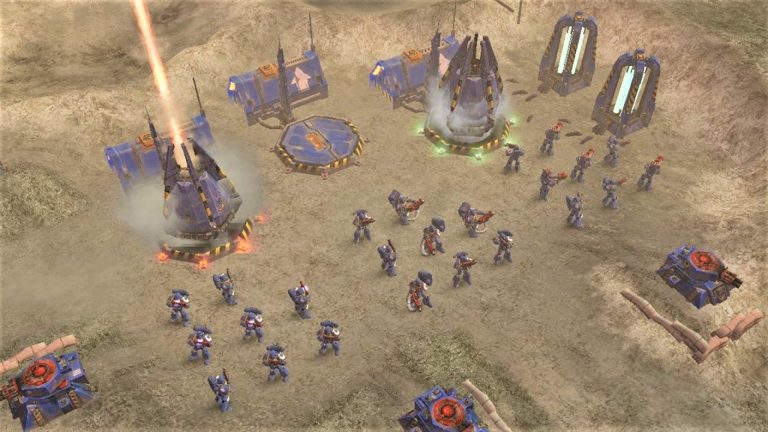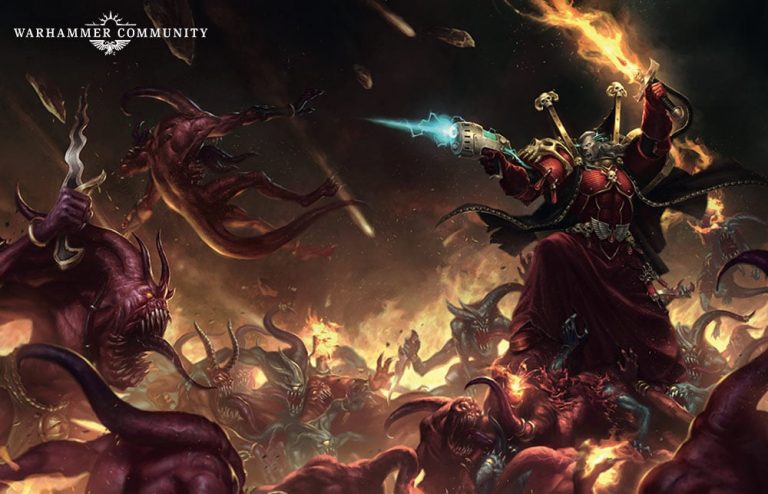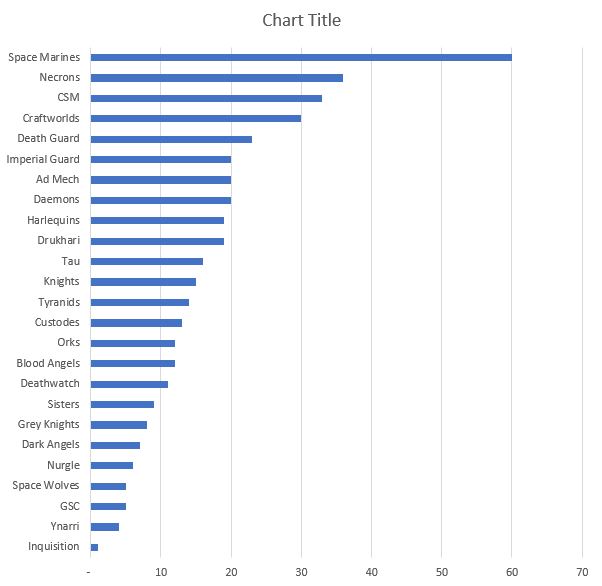Warhammer 40k Games: Building And Painting Large-Scale Terrain Pieces For Immersive Battles
Are you ready to embark on an epic journey into the world of Warhammer 40k games? Get ready to dive into immersive battles like never before! In this article, we will explore the art of building and painting large-scale terrain pieces that will take your gaming experience to the next level. Whether you’re a seasoned hobbyist or just starting out, this guide will provide you with tips and tricks to create stunning and realistic landscapes for your tabletop battles.
When it comes to Warhammer 40k games, the battlefield is just as important as the miniatures themselves. Building and painting terrain pieces not only adds visual appeal to your gaming table, but it also enhances the overall gameplay experience. Imagine commanding your army amidst towering ruins, treacherous landscapes, and intricate structures that breathe life into your battles. With a little creativity and some handy techniques, you can bring these immersive environments to life.
Join us as we delve into the world of Warhammer 40k terrain building and painting. From constructing realistic ruins to crafting dynamic landscapes, we’ll cover it all. Get ready to unleash your inner artist and create awe-inspiring terrain that will leave your opponents in awe. So grab your brushes, roll up your sleeves, and let’s dive into the wonderful world of large-scale terrain pieces for Warhammer 40k games!
Looking to enhance your Warhammer 40k battles? Building and painting large-scale terrain pieces can take your games to the next level of immersion. Start by gathering the necessary materials such as foam boards, styrofoam, and paints. Use a hot wire cutter to shape the terrain pieces and glue them together. Once assembled, prime and paint the terrain to match your desired theme. Adding details like rocks, foliage, and debris will further enhance the realism. With these custom-built terrain pieces, your Warhammer 40k battles will come alive!

Warhammer 40k Games: Building and Painting Large-Scale Terrain Pieces for Immersive Battles
Warhammer 40k is a popular tabletop wargame that allows players to engage in epic battles set in a futuristic universe. One of the key aspects of the game is building and painting large-scale terrain pieces, which add depth and immersion to the gameplay. In this article, we will explore the process of creating and painting these terrain pieces and discuss how they enhance the overall gaming experience.
Building Large-Scale Terrain Pieces
Building large-scale terrain pieces for Warhammer 40k requires careful planning and creativity. The terrain serves as the backdrop for the battles and can greatly enhance the visual appeal and immersion of the game. Here are two key steps to consider when constructing your terrain:
1. Designing the Layout: Before you start building, it’s important to have a clear vision of how you want your battlefield to look. Consider the different types of terrain you want to include, such as hills, forests, ruins, or buildings. Sketch out a rough layout and think about how the terrain will affect the gameplay. Will it provide cover for units or create strategic chokepoints? Take your time to plan out the layout to ensure a cohesive and engaging battlefield.
2. Choosing the Materials: Once you have a layout in mind, it’s time to gather the necessary materials. Foam boards, polystyrene, and cork are commonly used for creating the base structure of the terrain. These materials are lightweight, easy to shape, and can be glued together to form hills, cliffs, or other landforms. Additionally, you can use various modeling materials like plasticard, balsa wood, or even recycled materials to add details and texture to your terrain. Don’t be afraid to experiment and mix different materials to achieve the desired effect.
Building Techniques and Tips
When constructing large-scale terrain pieces, there are several techniques and tips that can help you achieve professional-looking results. Here are two important considerations:
1. Layering: Layering is a technique that involves building up different levels of terrain to create depth and variation. Start with a solid base layer, such as foam board or cork, and then add additional layers to create elevation and contours. This can be done using foam blocks, stacked polystyrene, or even crumpled newspaper. The key is to ensure a smooth transition between the layers for a natural-looking terrain.
2. Texture and Detailing: Adding texture and detailing to your terrain can make a significant difference in the overall aesthetic. Consider using modeling materials like plasticard or balsa wood to create walls, doors, or other architectural elements. You can also use static grass, sand, or small rocks to simulate grass, dirt, or rocky terrain. Experiment with different textures and colors to achieve a realistic and visually appealing result.
Painting Large-Scale Terrain Pieces
Painting large-scale terrain pieces is an essential step in bringing your battlefield to life. It adds character, depth, and realism to the terrain, making it more immersive for players. Here are two key steps to consider when painting your terrain:
1. Priming: Before you start painting, it’s important to prime your terrain. Priming creates a smooth and even surface for the paint to adhere to. Use a spray or brush-on primer that is suitable for the materials you used to construct your terrain. This step will ensure that the paint colors appear vibrant and adhere properly to the surface.
2. Layering and Drybrushing: Layering and drybrushing techniques are commonly used in terrain painting to create depth and highlights. Start by applying a base coat of paint in the desired color scheme. Then, gradually layer on additional coats of paint, focusing on highlighting raised areas and adding shading to recessed areas. Drybrushing involves lightly brushing a lighter color over the raised surfaces to create texture and highlights. This technique adds depth and dimension to your terrain.
Tips for Painting Terrain
Painting large-scale terrain pieces can be a time-consuming process, but it is well worth the effort. Here are two tips to help you achieve great results:
1. Color Scheme: Choose a color scheme that complements the theme of your battlefield. Consider the environment and atmosphere you want to create. For example, if you want a desolate and war-torn look, use muted and earthy tones. If you want a vibrant and alien landscape, experiment with bold and contrasting colors. Consistency in color scheme across all your terrain pieces will create a cohesive and visually appealing battlefield.
2. Weathering and Detailing: Adding weathering and detailing can take your painted terrain to the next level. Use techniques like drybrushing, washes, and stippling to create wear and tear, rust, or moss effects. Additionally, adding small details like decals, graffiti, or battle damage can add realism and character to your terrain. Pay attention to the small details, as they can make a big difference in the overall appearance.
In summary, building and painting large-scale terrain pieces for Warhammer 40k games can greatly enhance the overall gaming experience. By carefully planning your layout, choosing the right materials, and applying painting techniques, you can create immersive battlefields that bring your games to life. Whether you’re a seasoned hobbyist or a beginner, investing time and effort into your terrain will undoubtedly make your games more visually stunning and enjoyable. So, grab your brushes and get ready to embark on an exciting terrain-building journey!
Key Takeaways: Warhammer 40k Games: Building and Painting Large-Scale Terrain Pieces for Immersive Battles
- Building large-scale terrain pieces adds depth and realism to Warhammer 40k games.
- Painting terrain pieces enhances the immersive experience of battles.
- Using different materials and techniques can create diverse landscapes.
- Attention to detail is important for creating realistic terrain pieces.
- Terrain pieces can be customized to match the theme and atmosphere of the game.
Frequently Asked Questions
Learn everything you need to know about building and painting large-scale terrain pieces for immersive battles in Warhammer 40k games.
1. What materials do I need to build large-scale terrain pieces?
To build large-scale terrain pieces for Warhammer 40k games, you’ll need a few essential materials. First, you’ll need a sturdy base material, such as high-density foam or MDF board, to create the foundation of your terrain. Additionally, you’ll need tools like a hot wire foam cutter, hobby knife, and sandpaper to shape and refine your terrain pieces. Don’t forget to stock up on adhesive like super glue or hot glue to secure different parts together. Finally, you’ll need paints, brushes, and flocking materials to add texture, color, and detail to your terrain.
Remember to plan your terrain piece in advance and gather any specific materials required for your desired design. Whether you’re creating a futuristic cityscape or a barren wasteland, having a clear vision and the necessary materials will ensure a successful project.
2. How can I achieve realistic textures on my terrain pieces?
Creating realistic textures on your terrain pieces is crucial for immersing players in the Warhammer 40k universe. One effective way to achieve realistic textures is by using a combination of materials and techniques. For example, you can use fine-grain sand or modeling paste mixed with PVA glue to create rough, rocky surfaces. You can also incorporate natural materials like twigs, rocks, or even small pebbles to add additional texture and realism.
Painting techniques can also enhance the texture of your terrain. Dry brushing, where you lightly brush paint over raised surfaces, can bring out details and create a weathered look. Additionally, washes or glazes can be applied to recessed areas to create depth and shadows. Experiment with different techniques and materials to find the perfect combination for your desired effect.
3. How should I approach painting large-scale terrain pieces?
When painting large-scale terrain pieces, it’s important to have a systematic approach to ensure consistent and high-quality results. Start by priming your terrain with a suitable primer to create an even surface for painting. Next, plan your color scheme and apply base coats to the different areas of your terrain. This will provide a foundation for subsequent layers of highlighting and shading.
Once the base coats are dry, you can begin adding highlights and shadows to bring out the details. Dry brushing is a popular technique to highlight raised areas, while washes or glazes can be used to darken recessed areas. Take your time and layer the colors gradually to achieve a realistic and visually appealing result. Finally, don’t forget to seal your painted terrain with a varnish or protective coating to ensure its longevity.
4. How can I make my terrain pieces more interactive for gameplay?
To make your terrain pieces more interactive for gameplay in Warhammer 40k, consider incorporating elements that affect gameplay mechanics. For example, you can create elevated platforms or buildings that provide strategic advantages to units positioned on them. Adding removable or interchangeable elements, such as barricades or gates, allows players to modify the battlefield during the game.
Another way to enhance interactivity is by creating terrain features that have in-game effects. For instance, you can construct toxic pools or impassable obstacles that affect movement and combat. Including dynamic elements like crumbling ruins or collapsible structures can add an extra layer of excitement and unpredictability to battles. Remember to balance gameplay considerations with aesthetic appeal to create engaging and immersive terrain pieces.
5. Are there any resources or tutorials available for building and painting large-scale terrain pieces?
Yes, there are numerous resources and tutorials available to help you master the art of building and painting large-scale terrain pieces for Warhammer 40k games. Online communities, such as forums and social media groups dedicated to Warhammer 40k, often have members who are willing to share their knowledge and expertise.
You can also find tutorials on YouTube and other video-sharing platforms, where experienced hobbyists demonstrate various techniques and provide step-by-step instructions. Additionally, there are books and magazines specifically focused on terrain building and painting in the Warhammer 40k universe. Exploring these resources will provide you with inspiration, guidance, and valuable tips to elevate your terrain-building skills.
Making a Huge Battlefield | Warhammer 40k 9th edition Board
Final Thought: Unleash Your Creativity and Dominate the Battlefield!
As we wrap up our journey into the world of Warhammer 40k games and the art of building and painting large-scale terrain pieces, one thing is crystal clear: the immersive battles that await you on the tabletop are limited only by your imagination. With your trusty paintbrush and some plastic sprues, you have the power to bring to life sprawling landscapes, intricate structures, and captivating scenery that will transport you and your opponents into the heart of the grim darkness of the 41st millennium.
Remember, dear hobbyist, that the key to creating awe-inspiring terrain lies not only in the technical aspects of construction and painting, but also in the stories you weave within each piece. The ruins of an ancient temple whisper tales of forgotten glory, while a dilapidated cityscape tells of the ravages of war. By infusing your creations with character and narrative, you enhance the immersive experience for both yourself and your fellow gamers.
So, whether you’re building towering fortresses, sprawling urban battlefields, or desolate alien landscapes, let your imagination run wild. Experiment with different techniques, embrace the imperfections that make each piece unique, and most importantly, have fun! Your dedication and passion for your craft will shine through in every brushstroke and every carefully placed miniature. So, gather your tools, prepare your paints, and get ready to dominate the battlefield with your awe-inspiring terrain creations. The grim darkness of the far future awaits, and it’s up to you to shape it. Let the battles begin!






